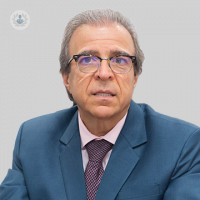Advantages of corneal refractive surgery
Written by:
What is the femtosecond laser surgery?
The femtosecond laser Corneal Refractive Surgery, is a device with infrared wavelength high precision, working in millionths of a second. It produces cut tissue but separates providing minimum dose of energy to produce a disruption between cells. Another feature is its extreme accuracy without cutting or heat transfer to adjacent cells because it uses infrared light to separate molecules. Femtosecond lasers play with micron accuracy microincisions previously designed by the surgeon, and therefore not so directly dependent on the manual dexterity of the ophthalmologist, increasing safety, speed and accuracy of surgery.
 What technical developments have occurred in this respect in recent years?
What technical developments have occurred in this respect in recent years?
Femtosecond lasers have evolved undisputed in the last 10 years. We started with Intralase, first laser femtosecond worldwide, the first was the Intralase 15, then the Intralase 30, was followed by developing 60 and today its latest generation Intralase 150, which also allows to perform Flaps bladeless or microkeratomes, perform intrastromal tunnels for implanting intracorneal rings in cases of keratoconus or other corneal ectasia, pockets to implement microlenses as kamra for treating presbyopia, and the possibility of penetrating or lamellar transplant corneas.
What conditions can solve?
It represents a significant advance in corneal refractive surgery to treat cases of nearsightedness, farsightedness and astigmatism, and presbyopia often attached to these refractive defects mentioned in patients older than 40 years.
Is an effective treatment to 100%?
With femtosecond lasers have removed all possible problems arising from the use of the microkeratome blades. It is a much more accurate surgery offers better refractive results, increases the safety of the intervention and standardizes the procedure, avoiding irregular flaps, incomplete flap, flap diameter or too deep, the flaps decentered and traumatic defects in the epithelium corneal.
What care should have the patient after surgery?
After surgery, the patient should rest, avoid water contact with the eye for five days, do not rub or touch the area for a week and use antibiotic and anti-inflammatory drops for the same time. We also recommend sunscreen with sunglasses outdoors during the first two or three months.
As with any surgical procedure cooperation and active participation in the recovery period it is required by the patient. There is usually a significant improvement in vision within the first 24 hours postoperatively. However, this progression can be slow and is likely to fluctuate from day to day, normal.
The patient who has undergone eye surgery of this type, you have to take some precautions to prevent injury or infection during the postoperative period, such as:• Avoid getting soap in your eyes during the shower, at least during the week following the operation.• Avoid entering eye products such as hair spray or aftershaves during recovery from Lasik eye surgery.• Avoid rubbing your eyes• Do not let the tap water in eyes for at least a week after surgery.• Do not go swimming for at least 30 to 40 days after the operation.• No eye makeup at least 3 or 4 weeks.• Do not exercise for the next two days to intervention.
In addition, any doubt that may arise after the refractive surgery or pain, loss of vision, bloodshot eyes or unusual eye discharge is experienced, it is necessary immediately contact an ophthalmologist .
Edited by Roser Berner Ubasos.


